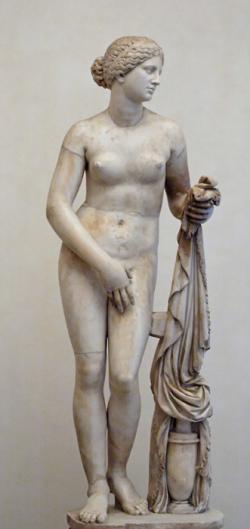Serendip is an independent site partnering with faculty at multiple colleges and universities around the world. Happy exploring!
Blogs

The Other: Friendship in Existentialism
Co-authored by Frindle
Zadie Smith begins and ends her novel, NW, with each half of a friendship. The novel opens with Leah, grown up and on her own, listening to a radio that at some point mentions what it is to define oneself. The novel closes with Keisha (now Natalie), going through an existential crisis. A large portion of the middle of the novel is devoted to the events that lead to the beginning and the end of the novel, toward the adulthood of these characters. In this way, the book appears to almost grow from the inside out, which parallels the theme of existentialism throughout the novel. Existentialism is the idea that one is defined through one’s own actions; what one chooses to do internally is observed by an “Other,” who then is able to define the other. In this way, one cannot be defined without an Other (in this case, a close friend). When one loses their Other, they also lose a large part of their identity and fall into despair, which leads to an existential crisis.

The Other: Friendship in Existentialism
Co-authored by Muni
Zadie Smith begins and ends her novel, NW, with each half of a friendship. The novel opens with Leah, grown up and on her own, listening to a radio that at some point mentions what it is to define oneself. The novel closes with Keisha (now Natalie), going through an existential crisis. A large portion of the middle of the novel is devoted to the events that lead to the beginning and the end of the novel, toward the adulthood of these characters. In this way, the book appears to almost grow from the inside out, which parallels the theme of existentialism throughout the novel. Existentialism is the idea that one is defined through one’s own actions; what one chooses to do internally is observed by an “Other,” who then is able to define the other. In this way, one cannot be defined without an Other (in this case, a close friend). When one loses their Other, they also lose a large part of their identity and fall into despair, which leads to an existential crisis.

Do we get what we deserve?
"I just don’t understand why I have this life." Leah said.
"Because we worked harder...We were smarter...We wanted to get out...they didn't want it enough...people generally get what they deserve." Natalie replies.
I paused at this paragraph towards the end of Zadie Smith's NW, thinking.
This is a book that presents vivid reality. This is a book that leads me to ask questions. This is a book that makes me doubt whether social mobility is really feasible. And one of the questions that I keep wondering is why Zadie Smith didn't seem to agree that it is very much possible.
"Visitation-Guest-Host-Crossing-Visitation". Through a circle of chapters, the four main characters, Leah, Natalie/Keisha, Felix and Nathan, live towards different paths after they leave their childhood's council estate, a place where all of them start from together.

The End of the World as Felix Knows It
ex·is·ten·tial·ism (n)–
A philosophy that emphasizes the uniqueness and isolation of the individual experience in a hostile or indifferent universe, regards human existence as unexplainable, and stresses freedom of choice and responsibility for the consequences of one's acts.
Throughout the course of Zadie Smith’s novel NW, the reader is treated to three different yet concurrent perspectives from residents of the NW neighborhood in London. The novel stars Leah Hanwell, the perennial underachiever, Felix Cooper, who is actively turning his life around, and Natalie Blake, née Keisha Blake, who on the surface seems the happiest and most successful of the three, but has her own demons to deal with. Each character has chapters following his or her life, leading up to the annual neighborhood Carnival. Besides the neighborhood itself, one of the points of the novel that ties all three sections together is Felix’s death the night before Carnival. It is referenced in Leah’s chapters, experienced in his, and the aftermath is mentioned in Natalie’s. Smith uses the intersection of these perspectives within the city in regards to Felix’s death as a tool to express the ideas of existentialist philosophy, structuring the story to show the connections in order to expose the meaninglessness in the lives behind those connections.
Mine Craft - day 1
Struggle: I was unable to connect to the multiplayer network because, as a Haverford student, I can only connect to the Bryn Mawr guest network and that does not connect with the Minecraft network, apparently. This was a prime example of how issues with wireless or insufficient connections can REALLY affect the access that people can have to various online tools or systems.
Accomplishment: Luckily one of my classmates was kind enough to let me work with her in exploring Minecraft because she was able to get into the class's network. It was really helpful to go through it with someone else because we were able to share ideas and figure things out together. It was also fun to get to know one of my classmates that I haven't really interacted with very much before that! :-)
Observation: It was pretty clear that some people were "naturals" at Minecraft and were learning how to do various things very quickly, while others were struggling pretty badly. Especially in the beginning of the period, before I had joined with my classmate, I found myself to be in the second group. As it seemed like my classmates were getting farther and farther ahead, I began to feel worse and worse about my Minecraft abilities. I can definitely understand how people who do not have access to technology or do not use technology feel as though they are outsiders to the exclusive club of the tech-saavy.
Question: I still have so many questions, I don't even know where to begin!

Friendship between Leah and Natalie
Friendship between Leah and Natalie
Relationships make a novel. Every single piece of stories is connected and combined by relationships of various sorts. Complex relationships among characters make plots splendid. In the novel NW by Zadie Smith, there are lots of relationships not only among characters but also among the backgrounds, the city, the stories and the fates, which makes the novel absorbing and interesting.

self-respect
On one side, Felix was naked and did not intend to cover himself. (Smith 113) On the other side, Natalie was naked, shamefully. (Smith 389) It is interesting to find that Zadie Smith opens two seemingly separated stories of unrelated people with the same settings and portraits. In re-reading this book, I am shocked that there are many similarities between Felix and Nat. However, there are large differences or even contrasts between them, which seem like two people with analogical background turn to adverse directions in lives. Maybe, I think, Felix plays vital rule in this book by acting as another opposite Natalie.

On Vulnerability (co-written with Pia Wong)
 “The man was naked, the woman dressed. It didn’t look right, but the woman had somewhere to go. He lay clowning in bed, holding her wrist. She tried to put a shoe on. Under their window they heard truck doors opening, boxes of produce heaved onto tarmac. Felix sat up and looked to the car park below… Grace tapped the window with a long fake nail: “Babe – they can see you.” Felix stretched. He made no effort to cover himself. “Some people shameless,” noted Grace and squeezed round the bed to straighten the figurines on the windowsill” (113).
“The man was naked, the woman dressed. It didn’t look right, but the woman had somewhere to go. He lay clowning in bed, holding her wrist. She tried to put a shoe on. Under their window they heard truck doors opening, boxes of produce heaved onto tarmac. Felix sat up and looked to the car park below… Grace tapped the window with a long fake nail: “Babe – they can see you.” Felix stretched. He made no effort to cover himself. “Some people shameless,” noted Grace and squeezed round the bed to straighten the figurines on the windowsill” (113).


Quilts
I like textile art, my mom really likes quilts, and they're something I look for whenever I got art museums. They're also something that a lot of people have, and that are often passed down through generations.
A fairly famous example of quilt making in action is the AIDS Memorial Quilt. I, admittedly, don't know a lot about it, but what I do know is pretty interesting. The project was developed in the wake of AIDS to memorialize people who'd died of it and consists of quilt blocks commemorating them, often made by family and friends. In "Queer Temporality," Halberstam talks queer temporality being shaped, in part, by the effect AIDS had (and still has) on the queer community, often referencing a fragility it produced. The quilt that references this temporality also has a long-lasting fragility--it takes a lot to conserve the quilt. It's also still around--it was created in 1987 and now we can still see it.

Classical Sculpture as NW (co-written with Natalie Schall)

“The man was naked, the woman dressed. It didn’t look right, but the woman had somewhere to go. He lay clowning in bed, holding her wrist. She tried to put a shoe on. Under their window they heard truck doors opening, boxes of produce heaved onto tarmac. Felix sat up and looked to the car park below… Grace tapped the window with a long fake nail: “Babe – they can see you.” Felix stretched. He made no effort to cover himself. “Some people shameless,” noted Grace and squeezed round the bed to straighten the figurines on the windowsill” (113).



